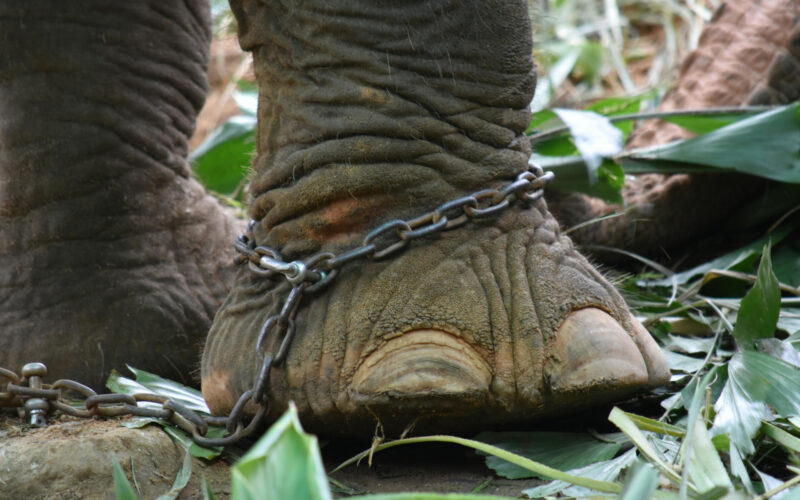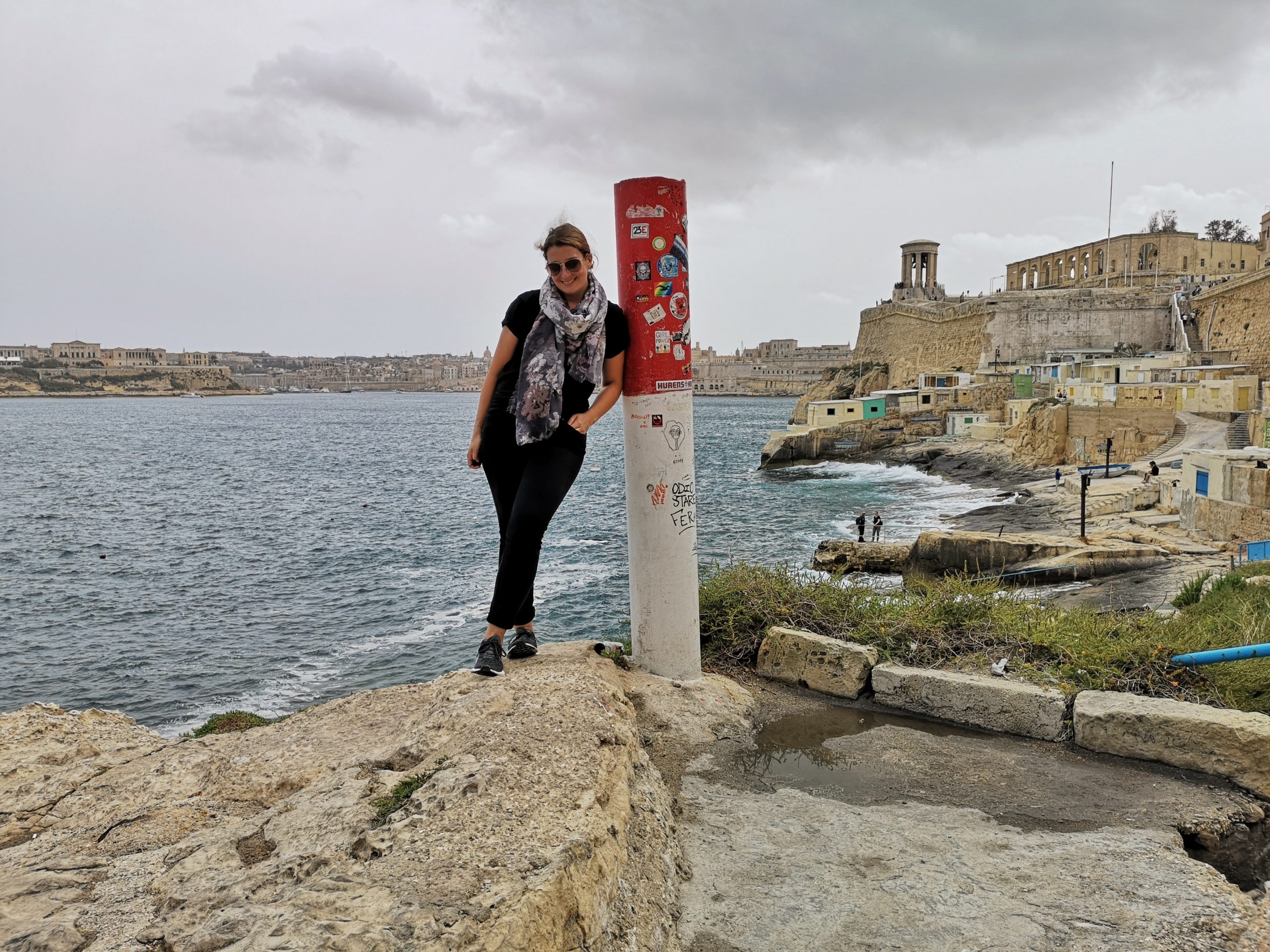A photo with a tiger or a giant snake? Riding an elephant? Or at least petting and feeding them?
There's no question that holiday photos and experiences like these are very tempting. When else would you ever get so close to a real, full-grown tiger? And this holiday photo on the wall is also something really special.
However, these attractions, or at least most of them, are unfortunately anything but ethical from the animals' point of view. It is important to note that I am not pointing the finger here! During my world trip in 2006, I visited a small zoo in Bangkok where a tiger lived in a cage that was less than 100 square metres in size, and there is also a photo of me with an anaconda on my shoulders. I even visited the elephant sanctuaries in Phuket two or three times.
But you can learn from your mistakes, and I wouldn't do that again today. That's why I want to tell you about the negative aspects of these attractions that sound so great, so that you can form your own opinion and then make a decision for yourselves..

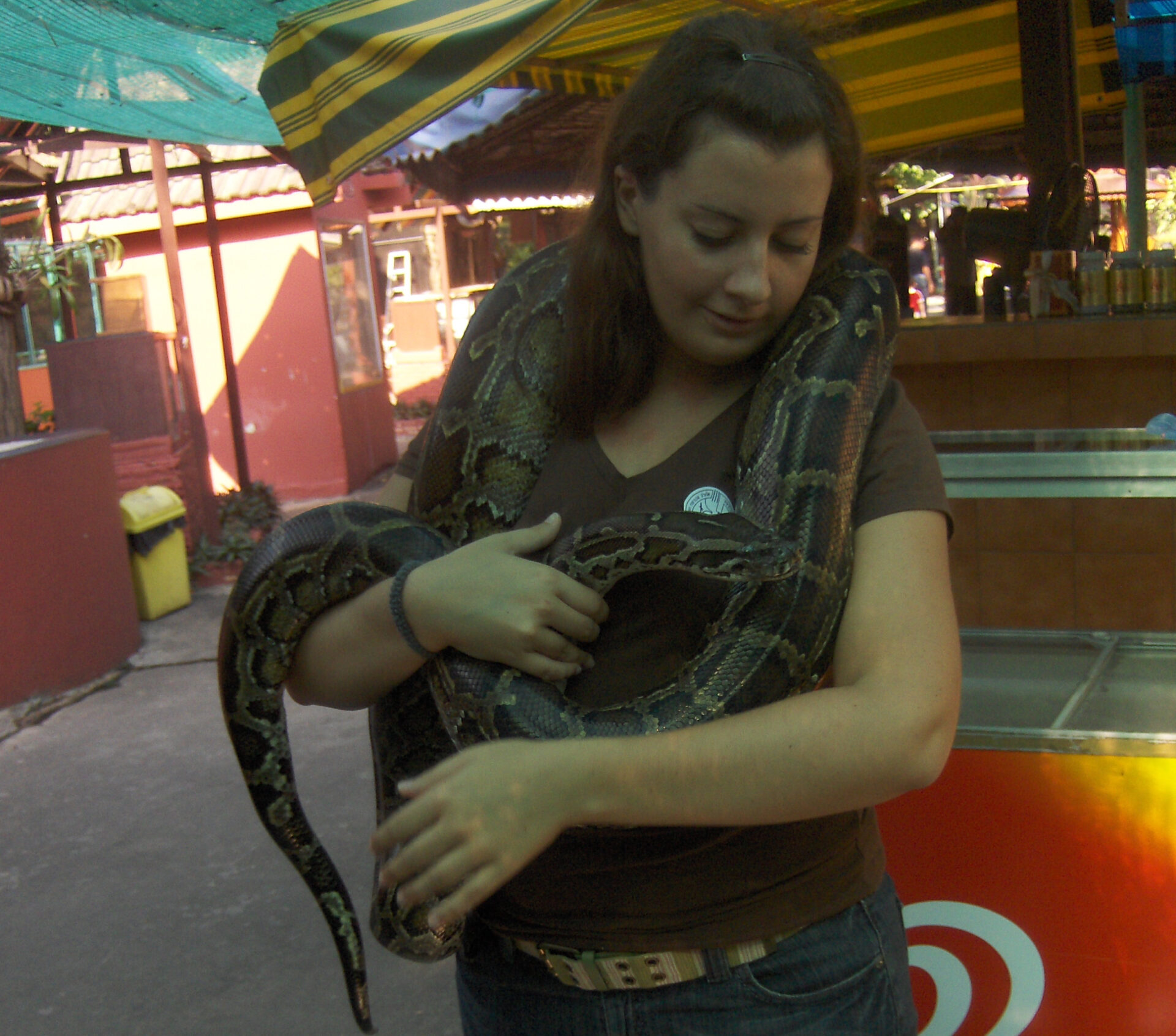
Don't try this at home: I took these pictures in 2006 at a small zoo in Bangkok. Back then, I didn't know any better.
Tiger Kingdom
Tiger Kingdom is an adventure park dedicated to tigers in Phuket and Chiang Mai, which attracts huge numbers of visitors. No wonder – as I mentioned above, I can totally understand that a photo with a tiger is something very special. Unfortunately, it also causes great suffering for the animal.
That is why Tiger Kingdom and similar parks have a negative connotation:
- Tigers are bred in captivity specifically to be availablefor this type of park. Breeding rare animals as an international contribution to species conservation is important and valuable – but breeding animals for parks has neither ambition nor aspiration in this regard and serves solely for financial profit.
- The big cats are sedated to ensure safe encounters with visitors. As you can imagine, a fully grown male Amur tiger can weigh over 300 kilograms and is potentially lethal.
- Enclosures that are too small and cramped, combined with a lack of activity, lead to severe behavioural disorders and stereotypical behavioursuch as restless pacing along the cage fence.
On YouTube, you can find numerous videos (trigger warning!) showing animals being tortured in parks and revealing the poor conditions in which they are kept.
Elephant riding
Many people are now aware that elephant riding experiences are not exactly conducive to the welfare of the animals. Nevertheless, there are numerous providers offering such experiences in Phuket and all other popular holiday destinations.
At first glance, it doesn't seem like anything bad: the mahout (elephant handler) sits behind the ears, behind him are the tourists on the saddles – and the elephants seem to lead a relaxed life as they stroll along leisurely. Or do they?
That's why you should not ride elephants:
- The elephants are often not gently broken in, but rather broken using brutal methods to make them docile.
- The heavy saddle frame and the tourists are not something that an elephant is naturally adapted to. They lead to back problems, joint problems and thus to severe pain.
- The animals usually live chained up, have hardly any freedom of movement and little opportunity for social interaction. Added to this is the monotonous work of walking tourists on their backs.
Photos with wild animals on the road
Anyone walking through the streets of Thailand's tourist centres will sooner or later encounter someone carrying a small monkey or snake, with which you can have your photo taken for a fee. At first glance, this seems completely harmless, so what could be wrong with it?
I recommend refraining from taking photos of wild animals on the road for the following reasons:
- The animals are poorly kept. When they are not being carried around to serve as photo props, they live in small enclosures, have no access to a natural environment and are often poorly/incorrectly fed.
- They are often mutilated in order to offer people a safe photo opportunity. For example, monkeys sometimes have their teeth pulled out so that they cannot bite seriously, and snakes have their fangs removed (no wonder, who wants to approach a cobra whose bite is actually deadly).
- The animals live under constant stress due to noise, flash photography, constantly new people placing them on their shoulders, crowds, unpleasant odours and so on.
For a photo with a monkey? Please decide for yourself whether it's worth it.
Animal shows
Snake, big cat, monkey and dolphin shows – there are numerous attractions, and not just in Phuket. The story of Keiko the killer whale finally spread around the world after the film ‘Free Willy’ was released.
However, virtually none of the other animals in the show share the good fortune of this orca, which was kept in a large bay until the end of its life because it could no longer be released into the wild. They lead a sad existence in artificial surroundings and enclosures and pools that are too small.
Why are animal shows unethical?
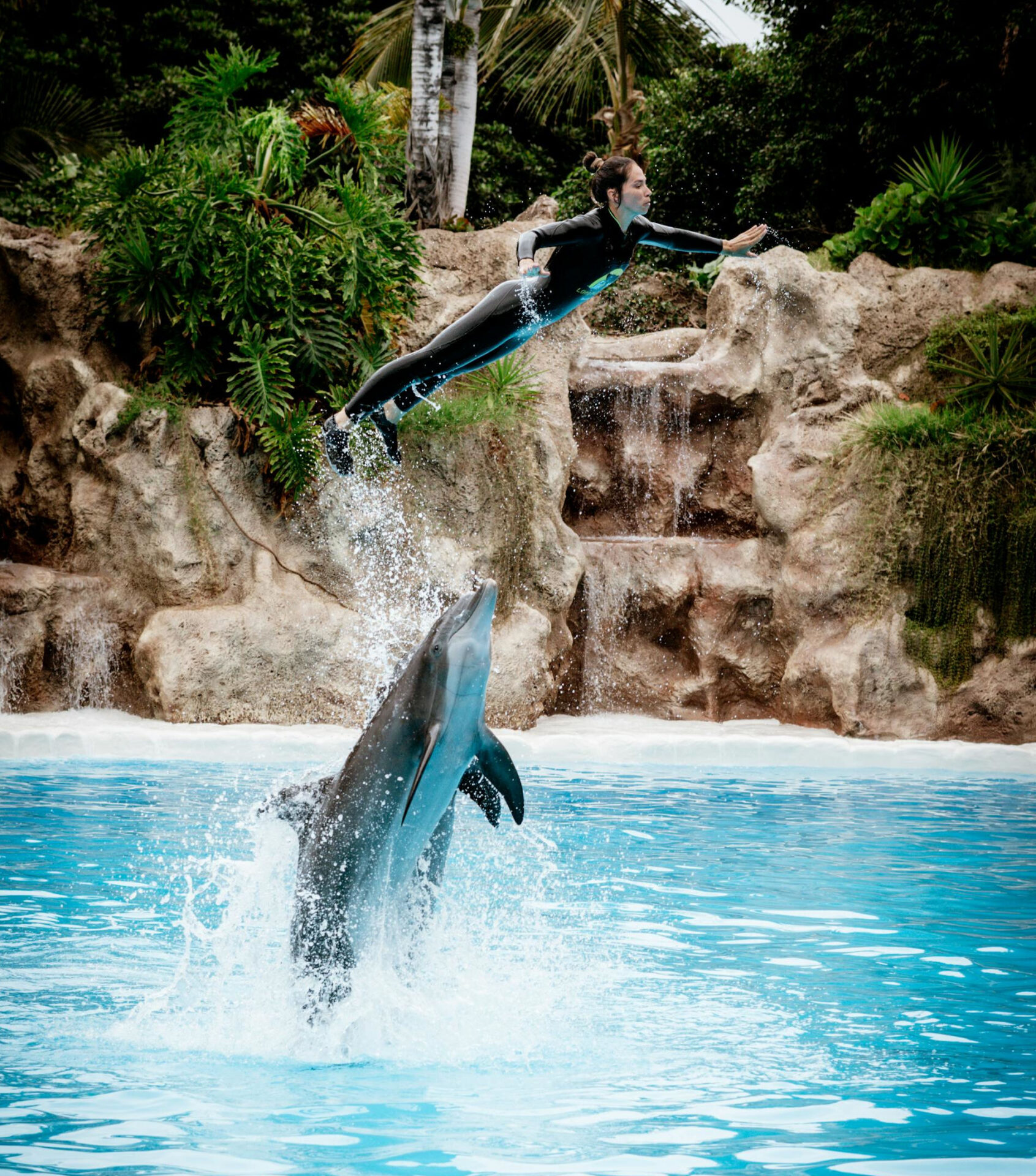
- The training often takes place under duress and using brutal methods. You can find numerous videos on YouTube about this, and every now and then a report makes it into the media.
- The animals often have to perform unnatural tricks. Of course, a dolphin can jump through a hoop and an elephant can stand on its hind legs. But in the wild, animals do this for natural reasons and not repeatedly in extreme forms under duress in shows.
- Here too, the following applies: in very rare cases are the show animals kept in conditions that are even remotely appropriate for their species.
Elephant rescue parks and sanctuaries
When it comes to elephant sanctuaries, we are on shaky ground. This is because there are parks that are at least partially ethically acceptable. However, if we interpret animal welfare strictly, even these fall outside the scope.
These are the reasons why:
- Some sanctuaries purchase elephants specifically from the market to make them available for tourists. After all, a touching story about the animal's ‘rescue’ is simply fabricated and not credible to the average tourist.
- Many parks advertise animal welfare, claiming to have rescued animals from elephant riding or from a life of labour, yet they allow close contact with the animals during bathing, feeding and petting. And as unique as these activities are, unfortunately this is not animal welfare, because animal welfare means allowing animals to live in large, natural areas with as little visitor interaction as possible – something that few facilities actually implement.
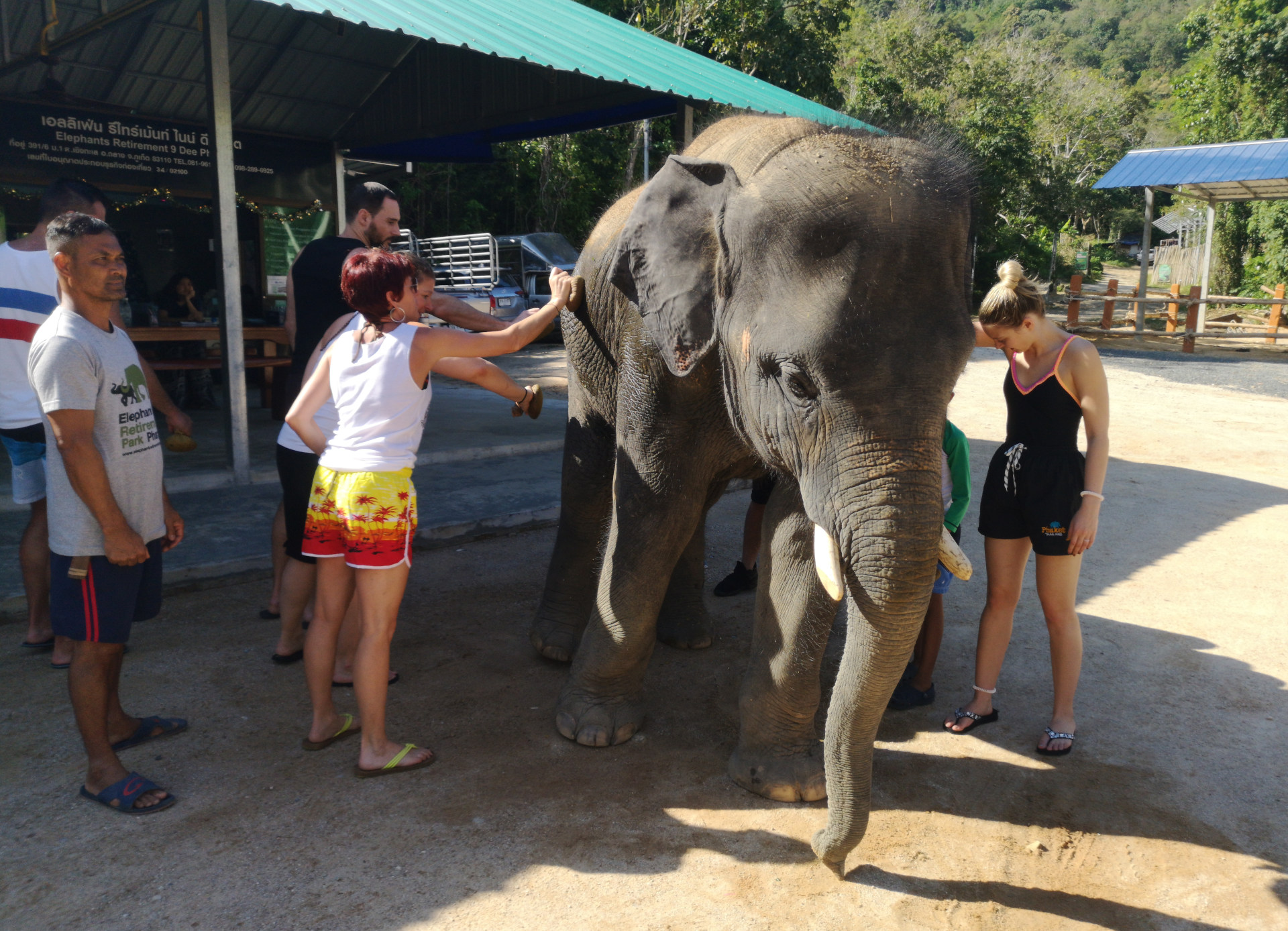
I visited this park in Phuket in 2019. There, we fed and groomed the elephants and bathed with them. I wouldn't do that today.
I would argue that a life as an elephant in a sanctuary, where they have to bathe with tourists, is less negative for the animal than a life as a riding elephant. But does that make it ethically acceptable and genuine animal welfare? No, unfortunately we are still a long way from that.
I really love the Hidden Forest Elephant Reserve allows you to feed and observe elephants, but there is NO bathing with them. This is clearly explained on the website. It is a much more ethical experience.
But what are acceptable attractions that involve animals without exploiting them?
Yes, of course there are inviting attractions that do not have a negative impact on the animals. However, they do not involve physical contact, but rather allow visitors to observe and experience the animals in a natural or near-natural environment.
Wildlife viewing in national parks
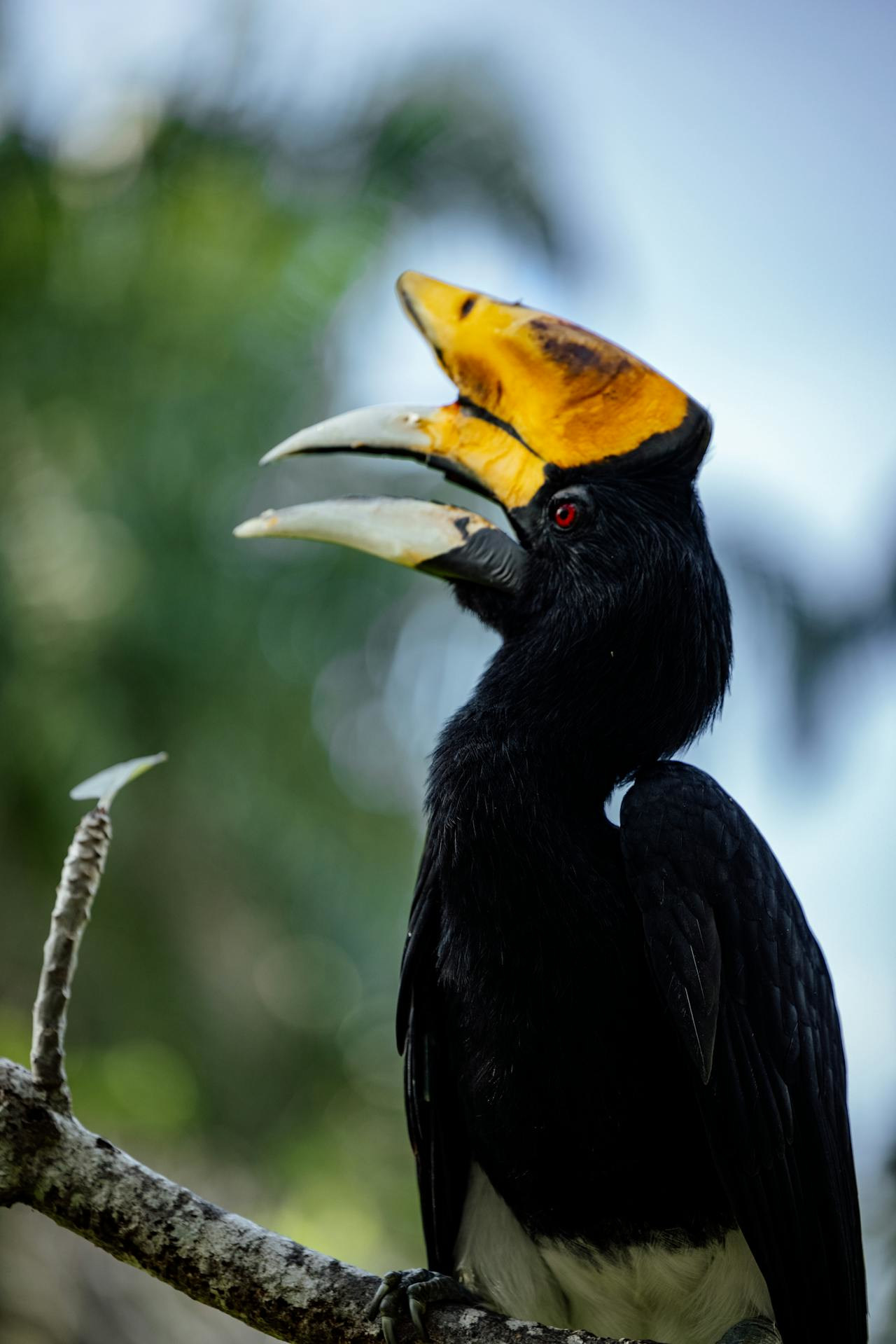
Examples include Khao Yai National Park (with elephants, gibbons and hornbills) and Kui Buri National Park (elephants in the wild).
In diesen Parks gibt es für das Beobachten von Wildtieren klare Regeln wie Abstand halten, kein Füttern, kein Lärmen. Und natürlich gibt es hier keine Garantie, das gewünschte Tier tatsächlich zu sehen.
Diving and snorkeling
Water sports such as diving and snorkelling are wonderful activities for experiencing animals up close in their natural environment. Of course, the same applies here: there is no guarantee of seeing blacktip reef sharks, turtles or manta rays. But even without these highlights, the colourful coral reefs, rock formations and simply the experience of being in the water are fantastic experiences.
By the way, you don't need to have a diving certification to try diving for yourself. With the Discover Scuba Diving programme, certified diving instructors will take you on real dives in a safe manner, allowing you to enjoy the experience to the fullest. And maybe you'll be so excited that you'll want to book a diving course afterwards? 😊 (Write meif you're in Phuket and want to go diving!)

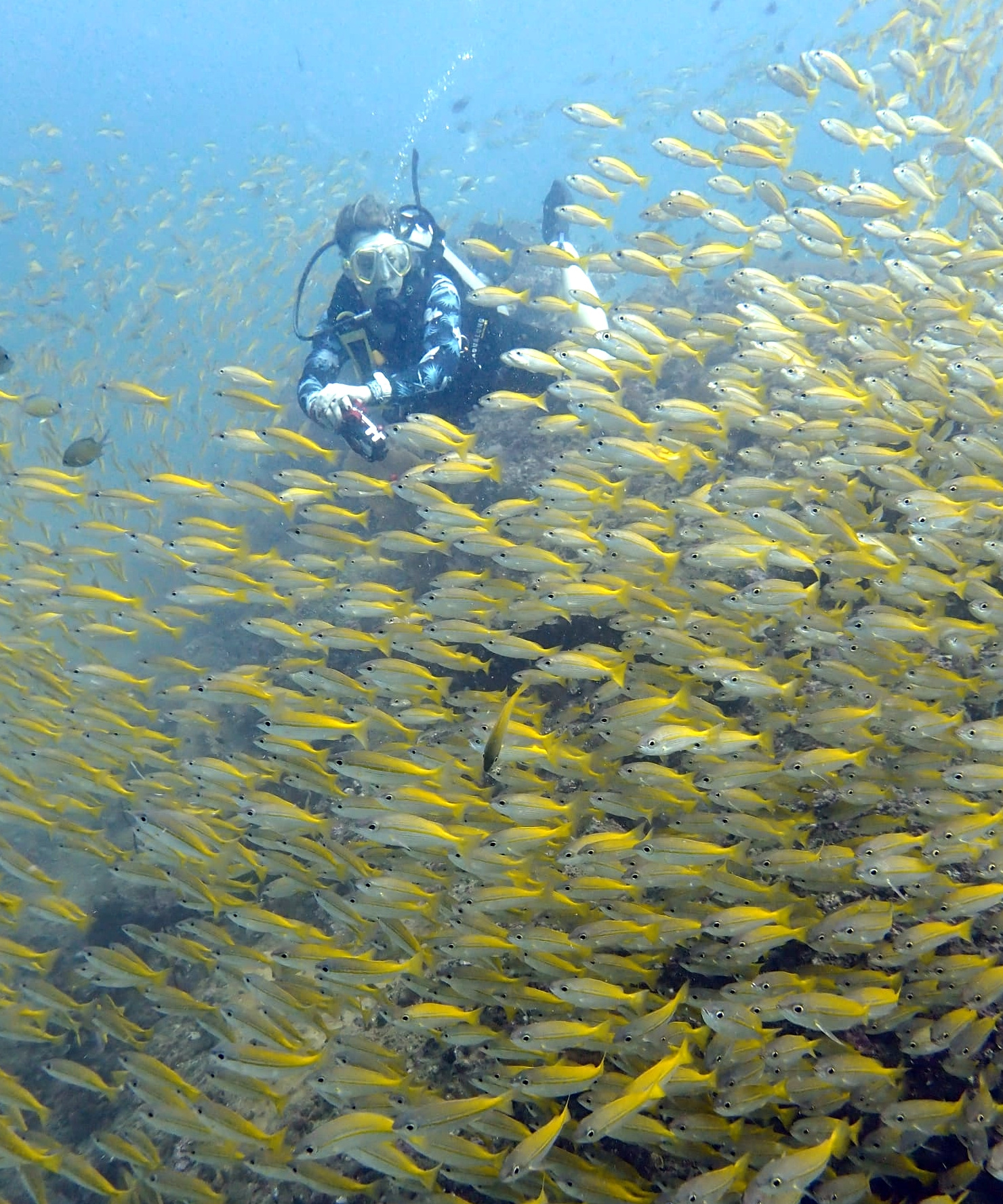


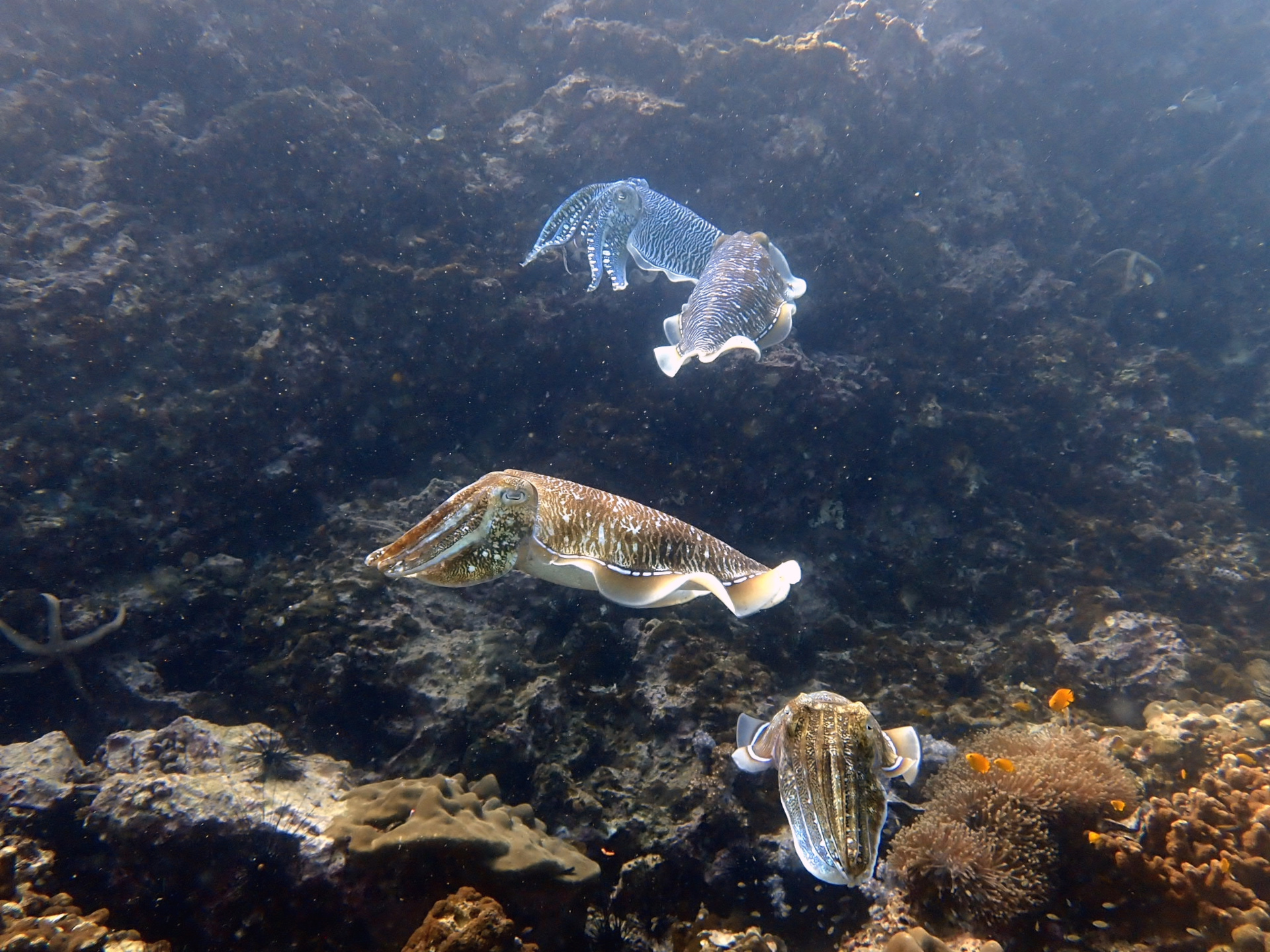
A note: There are also black sheep among divers who think they have to ride on a sea turtle. However, it should go without saying that you should not touch underwater creatures, and this is also for your own safety and health!
Visit reputable animal shelters without direct contact with animals
Reputable rescue centres focus on care, rehabilitation and reintroduction into the wild. They serve purely for the welfare of the animals. Admission fees paid by visitors are automatically donated to the work carried out on site.
These include projects run by the Wildlife Friends Foundation Thailand – WFFT , such as the one in Phetchaburi, about 2.5 hours south of Bangkok. There, elephants that have been freed from tourism or the timber industry are rehabilitated, nursed back to health and, if possible, released back into the wild.
Another example is the Gibbon Rehabilitation Project on Phuket. There, gibbons that originate from the illegal wildlife trade or were kept as pets or tourist attractions, are rehabilitated over several years before being released back into the wild.
Bird Watching
Ornithologists and bird lovers will find plenty to enjoy in Thailand's national parks. One example is Doi Inthanon National Park, known as ‘the roof of Thailand’, located in the province of Chiang Mai in northern Thailand. It is renowned for its enormous bird diversity and provides a permanent or recurring home to around 350 (documented) bird species. During the dry season, i.e. the peak season from November to February, it is said to be particularly exciting thanks to the presence of migratory birds.
But even non-ornithologists will enjoy themselves there thanks to well-developed hiking trails and animal observation platforms. It offers a mixture of cloud forest, mountain forest and waterfalls, providing plenty of photo opportunities.
In southern Thailand, there is Khao Sam Roi Yot National Park, the ‘mountain of 300 peaks’, where you can enjoy similarly fantastic experiences.
Sea Turtle Conservation Centers
It should be noted here that I am referring to stations that work for science and species conservation, not those that serve tourist purposes.
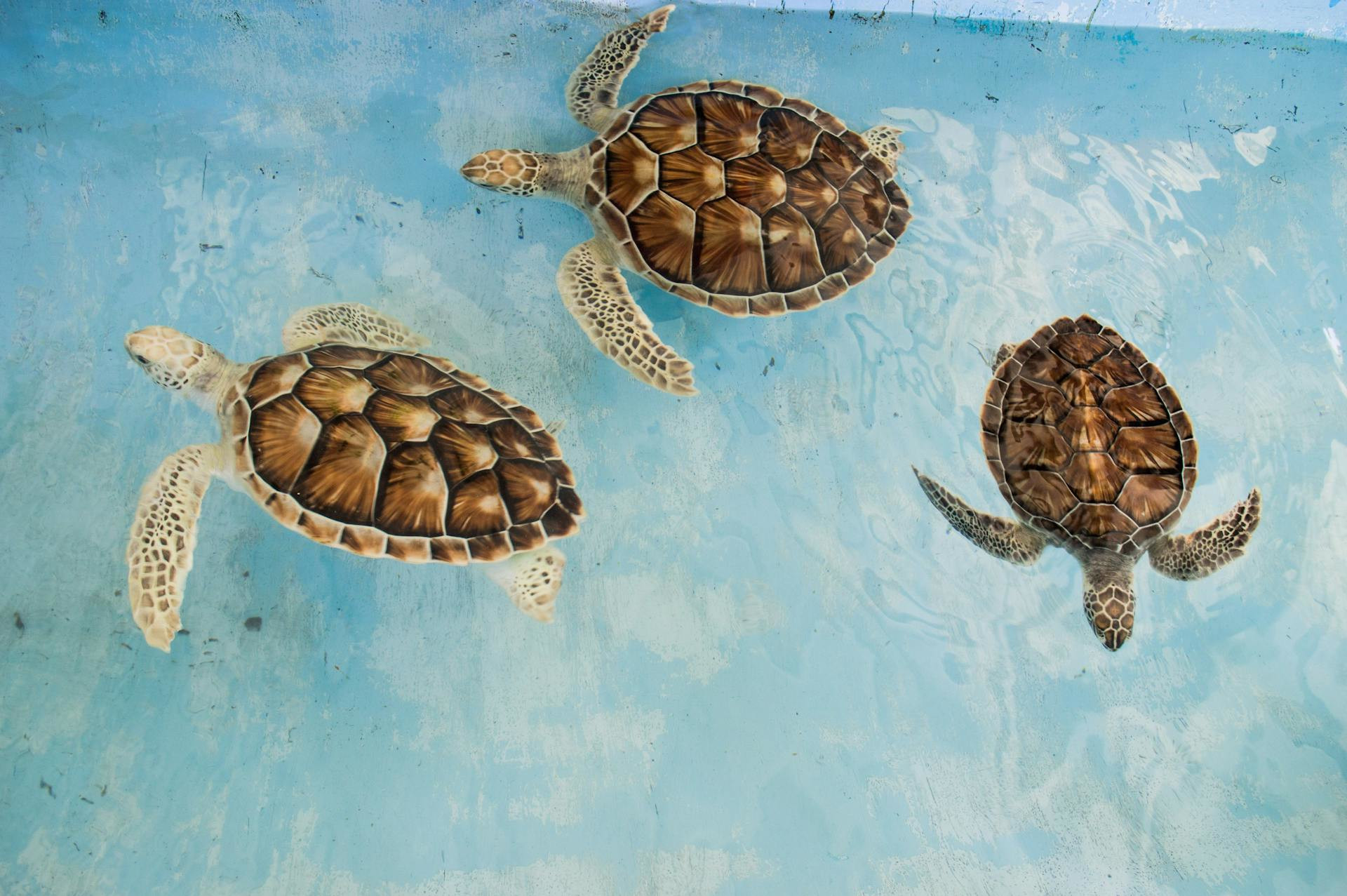
One example of this is the Phang Nga Naval Base Sea Turtle Conservation Center, located about 1.5 hours' drive north of Phuket. It is run by the Royal Thai Navy and serves to protect and breed endangered sea turtle species, especially green sea turtles and hawksbill sea turtles. For breeding programmes, eggs are collected from endangered nesting areas, incubated there and the hatchlings are then safely released into the sea. In addition, stranded and/or injured turtles are nursed back to health and (if possible) released back into the wild. All income and donations go towards research, equipping the centre and conservation measures.
As you can see, there are plenty of ethically acceptable activities involving animals, but they do not offer any guarantees or active entertainment, as is the case with classic animal tourist attractions. The following checklist provides you with specific tips that you can use on site to determine whether an animal attraction is ethically acceptable or not. Perhaps it will be of some help to you (German only).
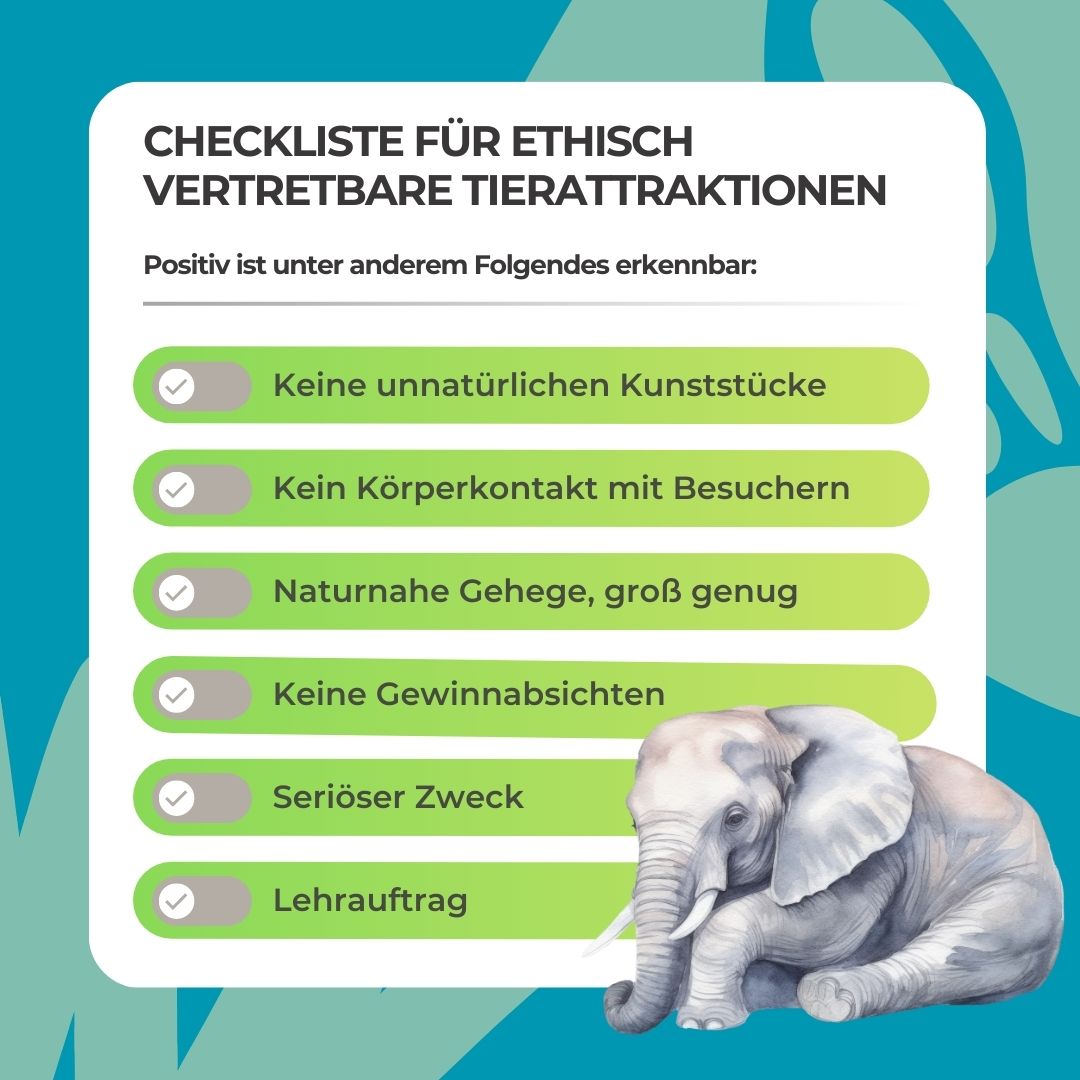
How do you feel about animal attractions on holiday? Are there any that you definitely want to visit, or perhaps, like me, have you visited some but now view them critically in hindsight?

